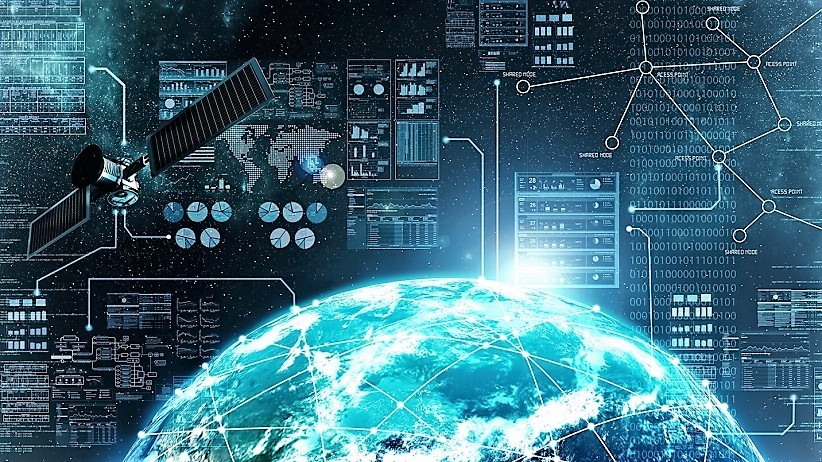Mr. Gopalan Govindharajan the Sales Engineering Consultant – IoT, Dell India talks to Shanosh Kumar From EFY Group focusing on the “Internet Of Things” ecosystem. Read more About Boomi and Dell IoT and how it is preparing the IT sector to face the future.
What Is ‘Internet of things’ ecosystem in your Perspective?
A It is an ecosystem where sensors, devices and equipment are connected to a network and can transmit and receive data for tracking, analysis and action. IoT is a concept that can be (and is already being) applied to many industries – healthcare, transport, civic management, manufacturing, auto sector etc. It affects all of us on a personal and professional front.
How does Dell help someone to get started with IoT?
A Creating secure and scalable Internet of Things solutions takes a tall stack of technology and, often, a robust set of partners. Dell takes a pragmatic and partner-centric approach towards making the Internet of Things a reality. We offer customers the choice to balance analytics across edge, datacenter and cloud models. We put customers at the center of the decision making process and provide them with the flexibility to choose the option that is best for them.
Dell brings a point of view based on architecting for analytics, the need to put security first, and importance of choice and flexibility. We also bring a range of technology solutions relevant for IoT solutions, including purpose-built IoT gateways, embedded pcs, analytics solutions such as Dell Statistica, data integrations solution with Boomi, a services practice, back-end infrastructure such as servers, storage, and networking, and a range of Security capabilities. Dell gateways complete Dell’s IoT portfolio of solutions including analytics, software, IoT services, networking, storage and servers allowing customers to start small and scale upward based on business needs.

Sensors surround us. Today, why is it important to get data from the physical world to the computing world?
A The key to getting data from the physical world to the computing world is to enable interconnectivity & interoperability between the various devices. The world as we see it today is filled with devices both new and old. Newer devices are built with interconnectivity and data transfer in mind such as the smart TVs , fitness trackers, and the smart refrigerators, whereas, the legacy devices such as conveyer belts and elevator equipment’s are either not built with connectivity options or are built with vendor specific connectivity options. Devices like the Dell Edge Gateway are built specifically to solve this issue by having various legacy I/O (what is I/O) options that enable being able to communicate to any type of devices and acquire data from it. By bringing data into the computing world, organizations are able to combine it with other data sources and use big data and analytics tools to create actionable insights in which to drive new efficiencies or innovations.
Making intelligent decisions using data generated by sensors is the central objective of IoT. Let me take you through an example of the importance of data. We worked with Chitale Diary to implement an Iot based solution. Domains like dairy farming has not been viewed as a high-tech industry, but Chitale dairy project has been able to do that by automating its whole process of milk production and monitoring. The feeding and breeding of animals is monitored by computers and by automating the collection of data from each farm. By being to execute this, they have improved animal health, leading to increased milk yield per animal. How this was achieved is by connecting every animal with a radio-frequency identification (RFID) tag that, when scanned, transmits unique information on each cow and buffalo back to the data center. Here, it is completely dependent on how sensor data is transmitted and basis that, the system deciphers each animal’s unique behaviour, which will result in reaching the right insights to improvise on the system.
Does Sensor data help in re-organizing and analysing IT solutions?
A Absolutely, sensor data is vital for re-organizing and analysing IT solutions. For example, Dell’s PowerEdge servers are equipped with a wide variety of sensors that enable IT Administrators to constantly monitor various attributes such as temperature, airflow, intrusion detection etc. These sensors enable a real time solution to detect or avoid various day to day data center issues. Similar to the sensors in the servers, almost all IoT solutions have sensors that enable us to monitor, detect and control various devices.
What Operational elements make Internet of things possible?
A The key operational elements for IoT solutions are IoT Software, sensors, gateways, server, storage and network switches.
What drives growth and revenue in the IoT Space, according to you?
A A growing understanding of where IoT solutions can deliver ROI and competitive advantage. Organisations need to identify realistic use-cases and build strategic plans based on realistic ROI analysis. A practical approach leverages your organization-wide technical and domain expertise and builds on your current technology investments.
One cannot ignore the demand generated, both from government initiatives and private enterprises on commercial as well as consumer usage of IoT based solutions. This will also drive revenue and growth.
How does Dell ensure that such initiatives are successful? What are the strategic and proactive measures involved with IT domain?
A At Dell, we lay out clear goals up front, and through starting small, leverage small wins into larger opportunities.












